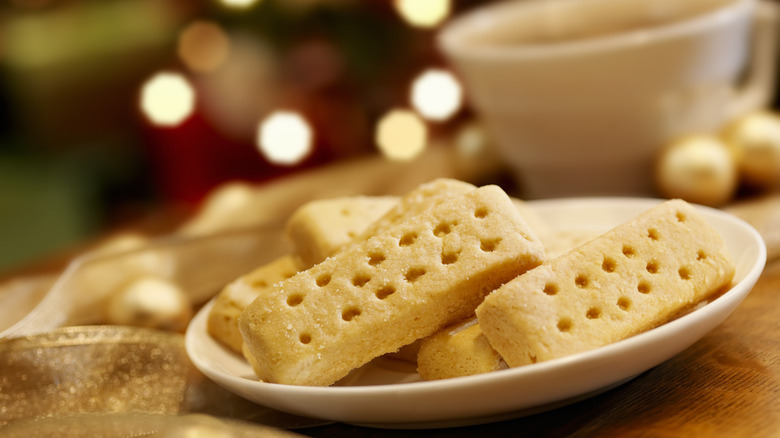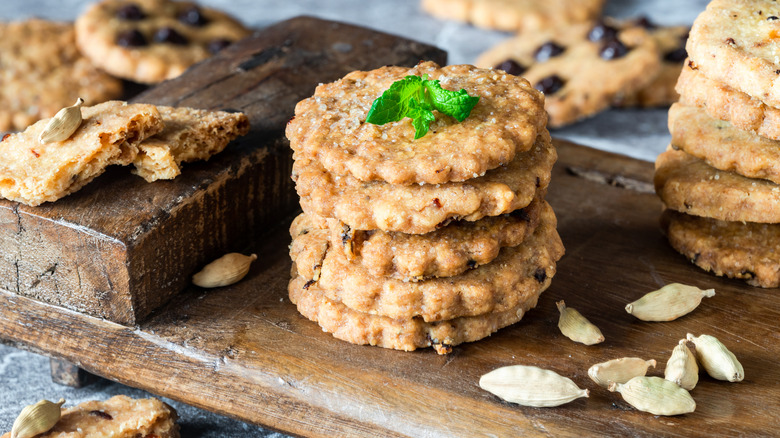The Sneaky Reason Scottish Shortbread Got Its Name
As Taylor Swift reminds us, "At tea time, everybody agrees." And, let's face it, everyone knows shortbread is an essential tea-time staple. With its roots centered firmly in Scotland its ingredients comprise barley, oats, potatoes, and protein-rich meats – traditional Scottish food is nothing short of hearty. Historically, Scotland has had many great culinary teachers: the Vikings brought with them their expert ale brewing techniques, and in the 16th century, French chefs were called upon by Mary, Queen of Scots to introduce new foods into the country. While dishes like haggis and Cullen skink are the stars of the savory menu, shortbread takes the cake (somewhat literally) for being the beloved sweet treat of the Scots.
Believe it or not, shortbread isn't a bread at all, but rather, a biscuit. The name can be attributed to the fact that the government once placed taxes on biscuits; so, to dodge the taxes, Scottish bakers labeled the pastry as bread. It was a bit of a sneaky move on their part, but when we dig deeper into the origins of this now cookie-like biscuit, there's certainly no shortage of bread in its historical roots.
A lengthy evolution
Shortbread has had a long, yet interesting, evolution from its origins as a medieval biscuit bread. When bakers were done crafting bread, unused dough was then twice-baked and dried into a rusk, which was a type of biscuit. Along the way, people began swapping out bread yeast for butter, and the name was changed to shortcake, as William Shakespeare called it in "The Merry Wives of Windsor." Similar to the verbiage in the terms shortcrust and shortening, the use of butter made the pastry short — which means it had more of a crumb-like texture as opposed to the long, stretchy consistency of regular bread dough.
Shortcakes once again went through a name change by the 18th century. Parliament began placing taxes on luxuries like cakes and biscuits, so to avoid this, bakers started calling the cakes "shortbread" to keep them classified as bread — a non-luxury good. The first printed shortbread recipe was from a woman named Mrs. McLintock in 1736, and it has been known as a bread ever since.
In more recent years, the European Union decided it wanted to classify shortbread as a common biscuit to impose new taxes in the 20th century — but the Scottish Association of Master Bakers fought back. They claimed that the cookie is culturally significant as a bread that belongs to an ancestral line of "flour confectionery." The bakers prevailed, and the easy to bake shortbread was not taxed as a biscuit.

